Incredibly Bad Film Show: Panther Squad
Dir: Peter Knight
Star: Sybil Danning, Jack Taylor, Karin Schubert
When I bought this for $3.99, Chris suggested that my selection of it had been influenced by Sybil Danning’s breasts rather than any intrinsic qualities. While acknowledging their charm, I rejected this claim completely, and confidently expressed the belief that Panther Squad would extend Sybil’s long and distinguished track record of quality B-movies such as Reform School Girls and L.A. Bounty.
Ok, I admit it: I was wrong. Horribly wrong. For it is actually a dismal piece of jaw-droppingly bad dreck which makes dire mis-steps in Danning’s career such as The Howling II look like Oscar-calibre material. Before watching it, my original plan had been to review it in the upcoming Trash City, as part of the A-Z of action heroines (a sequel to a similar piece in TC22), but it was simply deemed too bad – yes, falling short, even of the low standards of Model By Day.
It may only be 77 minutes long, but long before that, the prospect of being savaged by a large member of the cat family will seem like paradise in comparison. It struggles from the get-go, beginning with stock footage of a rocket taking off, part of a new space initiative led by NOON, the New Organisation Of Nations, a UN-like group who have nicked the flag of the European Union and are headed by a Henry Kissinger lookalike. But the craft is hijacked by ‘Clean Space’ (a group dedicated to…well, clean space), despite the best efforts of Noon’s space centre, which consists of about four people in a power station, saying things like “Move from H to 6” while alarms make wheeee-wheeee noises. Clean Space also kidnap backup astronaut Jane Dantine, followed shortly after by the most pathetically-staged car crash I’ve ever seen, largely consisting of waving the camera about while pointing it at some trees.
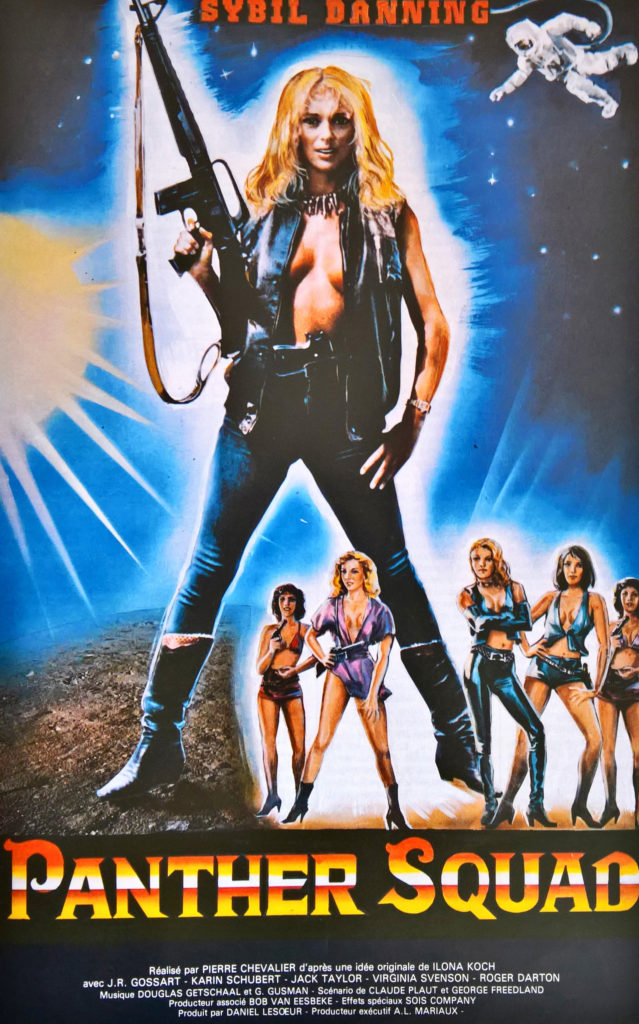
To crack this tough case, they need “the toughest cookie in our job”, Ilona (Sybil Danning, of course), as we learn in a barely coherent section which leaps from location to location, and character to character without explanation, punctuated by shots of Ilona with binoculars. “Wander around – you could learn some stuff,” someone tells her, so Ilona wanders around, and Ilona learns some stuff, despite being involved in a fight scene, which occasionally switches into slow-mo for no real reason, and is intercut with a sublimely pointless shot of the now totally-empty room she just left.
Ilona teams up with local agent Frank Randall (Jack Taylor), to whom I couldn’t help warming, since he is laidback to the point of being almost horizontal – largely through alcoholic consumption – and fond of saying things like “Beautiful women are my favourite pastime.” The root-beer drinking Ilona isn’t impressed. The jeep carrying Jane (remember her?) gets stuck in mud, and she escapes. briefly. To no point at all. Oh, well. Frank and Ilona meet a contact in a restaurant which features the least-convincing guitar playing of all time. Their contact – “the one with the Julio Iglesias haircut” – gets killed by someone who looks like a dwarf version of Danny Trejo, but inevitably passes on crucial information to Ilona. She has had enough, and brings in the rest of the ‘Panther Squad’. Seeing them clad in hotpants, halter tops and mini-skirts, I had to agree with Frank: “The Dallas Cowboys must be in town.”
Some confusion occurs here, as the name of the enemy group seems to change from ‘Clean Space’ to ‘The Circus’. Or perhaps they are an entirely different evil force; by this stage, you may well have had to adopt ‘defensive apathy’ with regard to such things, purely to survive. Whatever they’re called, they launch an attack on the bungalow, but since any count of the attackers would stop at round about…well, two, it’s not very effective. While Sybil watches through her binoculars (yes, the same shot used in the earlier scene), the Panther Squad set out to investigate a boat that seems to be involved, but their professionalism seems to leave a bit to be desired: they take out the guards okay, but leave them their guns… “Oh, I’ve been captured”, as Eddie Izzard would say.
The rest of the team head for the bad guys’ base, who are now obviously ready. Says one, “the two guys keeping watch have been attacked” – which is odd when I counted at least four. Never mind. However, the villains’ accents are so heavy, they are near-impossible to understand, so a mere inability to keep count in English may be forgiven. Less acceptable is the way all their guards relentless fall for the oldest ruses in the book, whether it’s Ilona pretending to be a tourist, or the dumb “lobbing a stone behind you” trick, and they respond with the reaction speed of slugs on Valium. How did this lot ever manage to become a threat to the world?
“The insects are bad here, but we’ll need more than Raid to kill off that pest”, says Ilona in a somewhat bemusing one-liner before her amazons attack. Jane (still remember her?) is spirited away, and the girls give chase, pausing only to ask the conveniently-passing Frank for directions. He shrugs and has a drink, perhaps wondering why they prefer to jog off down the road on foot, rather than taking his car. Ah, but they manage to get transport from somewhere, as they are next seen in a car being chased by a helicopter: they get out, the car is strafed, Frank turns up, Frank gets strafed too. “Think we might need some guns”, says Ilona, somewhat superfluously. Luckily, Frank has some in the back of his car. The helicopter crashes in a blaze of stock footage depicting an explosion on a mountain, using totally different film-stock.
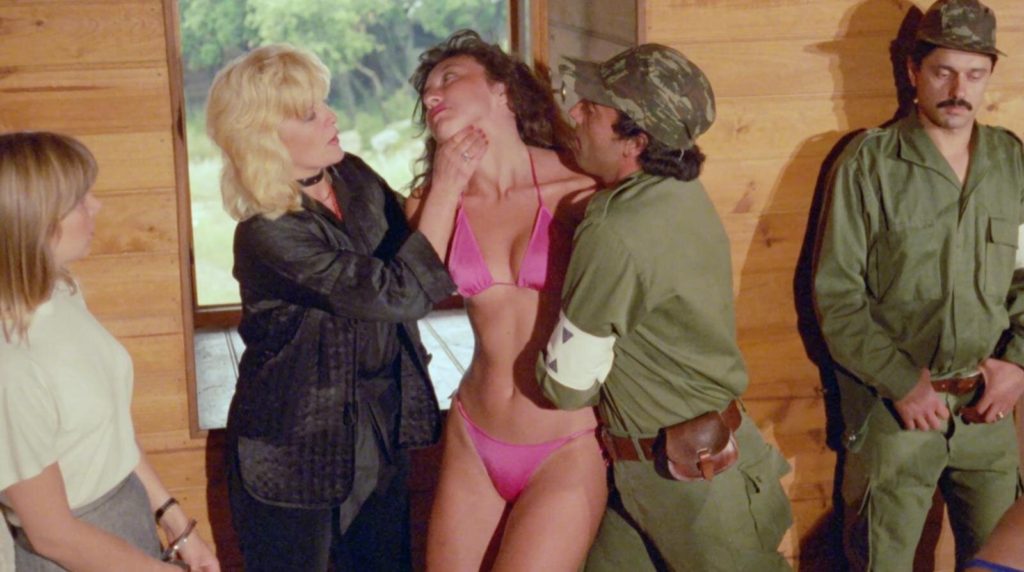
From here, it’s off to Government HQ, though before heading there, Frank gives Ilona a parcel she’d sent for for Sybil. At the HQ, a mad general is giving a banquet. “There is nothing and no-one to stop me now. I will be the lord and master of the world. Their so-called gate-posts will be reduced to slavery.” Gate-posts? Gate-posts? After four rewinds, I eventually realised that he meant “great powers”, but was burdened with the same dreadful accent as the rest of the crew. I say again, how did this lot ever manage to become a threat to the world? The guns the Panther Squad had in the previous scene have now vanished, and their opponents are too busy shooting them in the air, happy at the prospect of world domination, as their leader makes largely-inaudible threats which appear to involve nuclear power stations.
So, it’s off to the Space Centre, with Ilona now riding a motorbike — though there are two obvious proofs that it’s not her on the bike… The surprisingly loosly-guarded space centre prepares to, er, do bad things to nuclear power stations and…okay, I’m going to write this down exactly as I did at the time. Ilona’s parcel has a gun that makes a jeep invisible. The Space Centre sparks briefly, but is otherwise unharmed. The space program can continue and mankind’s new age of space has begun. Hoorah. You are now every bit as bemused as I was, watching it: “I need a drink”, says Frank, and not for the first time, I find myself in total agreement.
Footnotes
- The final credits give “Special thanks to the Aerospatiale”; one suspects this may be because whatever “aerospatiale” it was, thought it best to remain anonymous.
- Did Jess Franco have a hand in this? This site details the evidence.
- It’s kinda hard to tell where this film was shot. Bits look like Belgium, bits look like Spain, and bits are Japan — but that’s just the stock footage of a Japanese rocket taking off, so may safely be ignored…
- ‘Peter Knight’ is a pseudonym for (and, indeed a literal translation of) Pierre Chevalier, and was the last movie in a dubious career including such work as La vie amoureuse de l’homme invisible, which is pretty much what it sounds like.
- Sybil also co-produced the film. What was she thinking…
- If you’re wondering what happened to Sybil, her ‘agent’, the late, largely unlamented SC Dacy, appears to have been a significant reason. I vaguely recall some correspondence with him, trying to get an interview with Sybil in the early days of TC. I think communications were abruptly ended after he took offense at a sentence in an article which he perceived as being critical of her. I was unimpressed, shall we say.
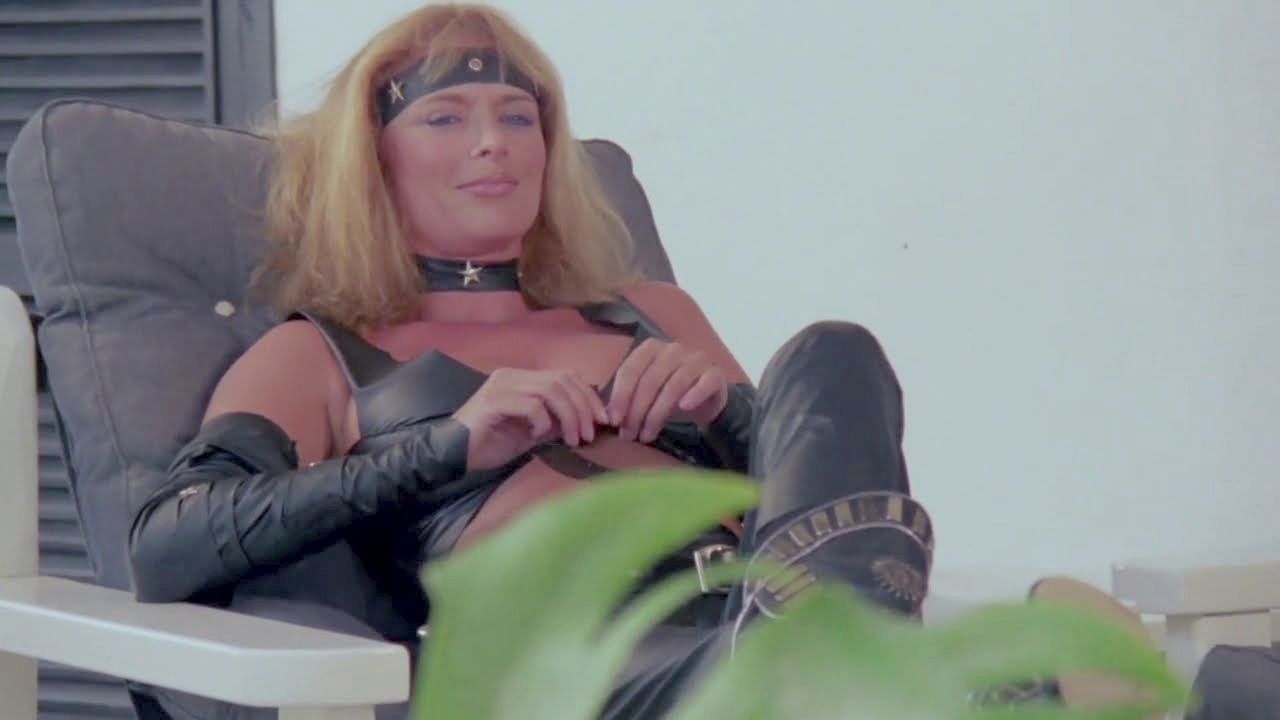
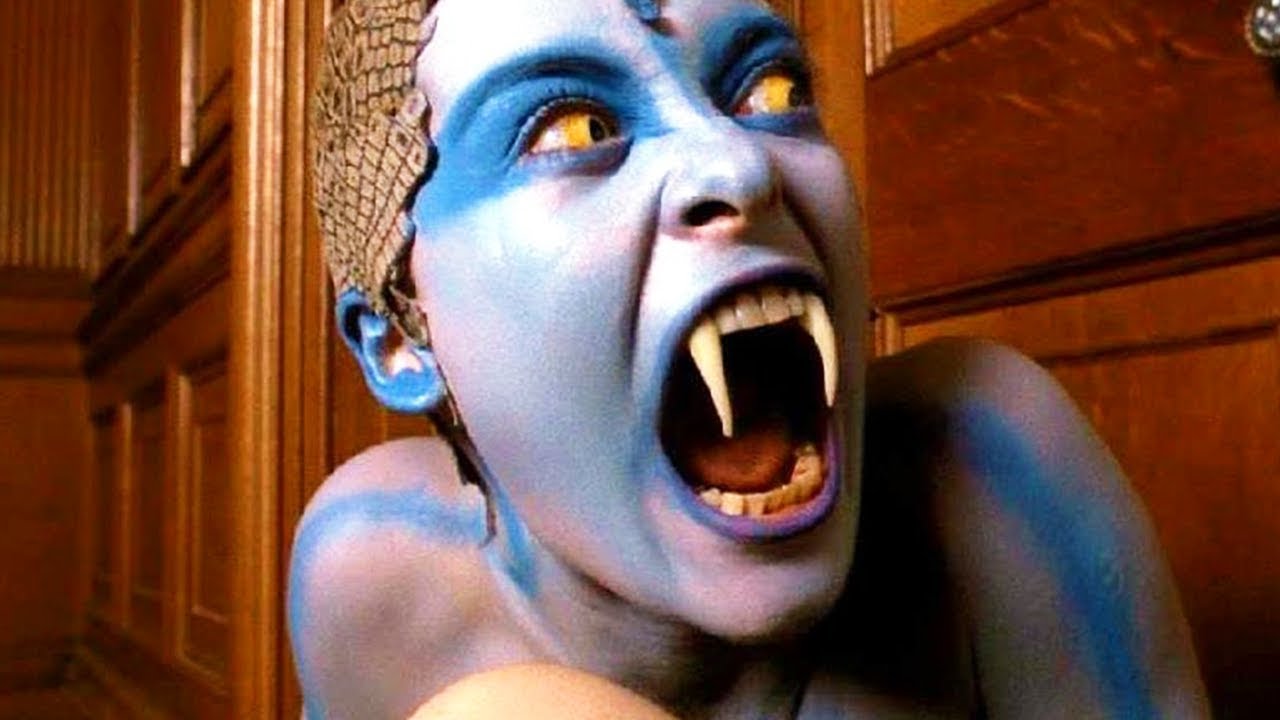
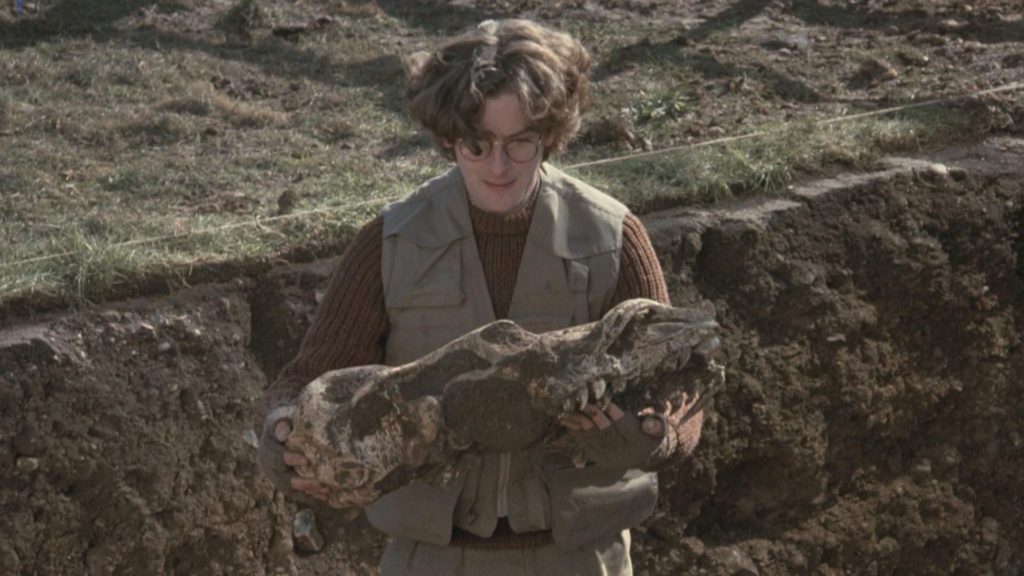
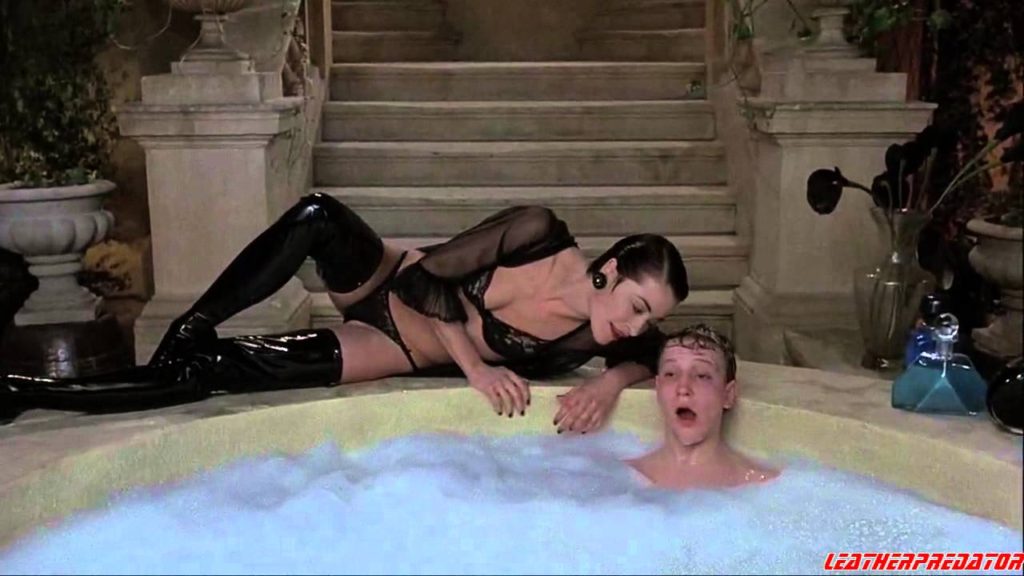
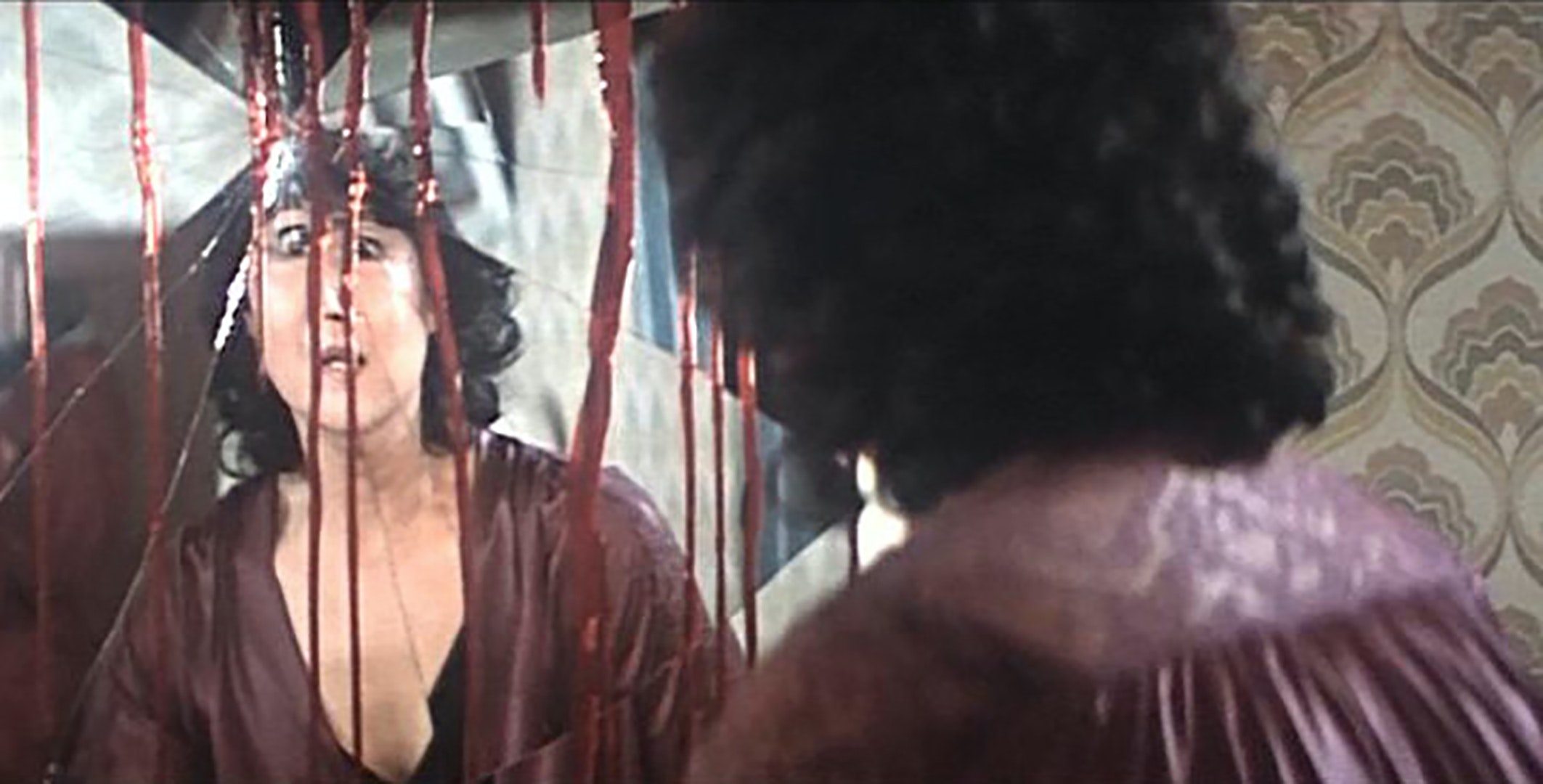
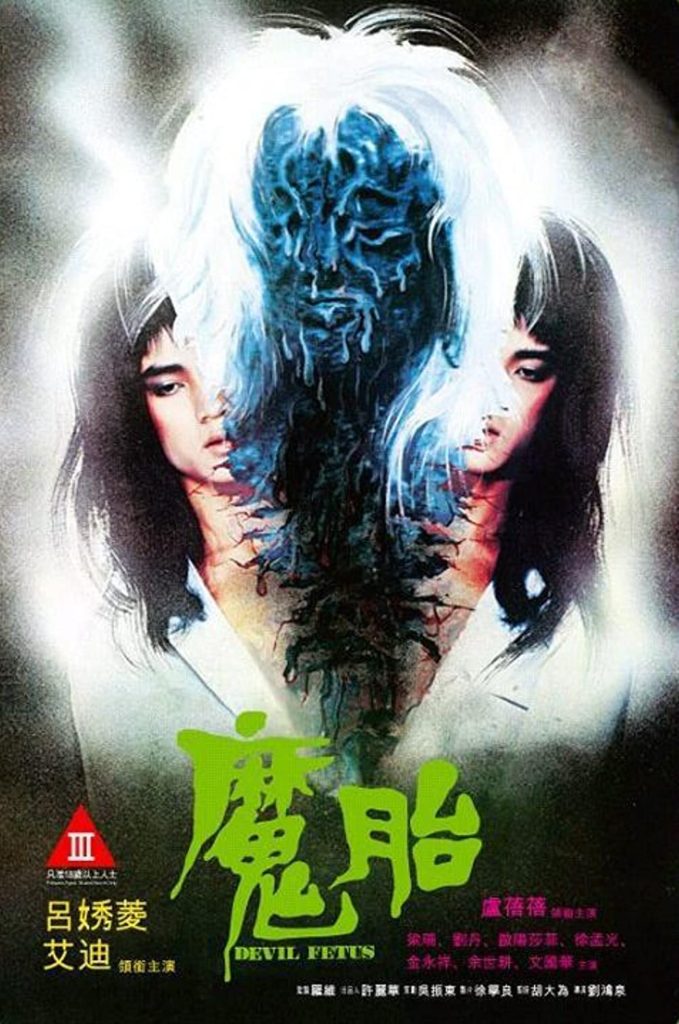
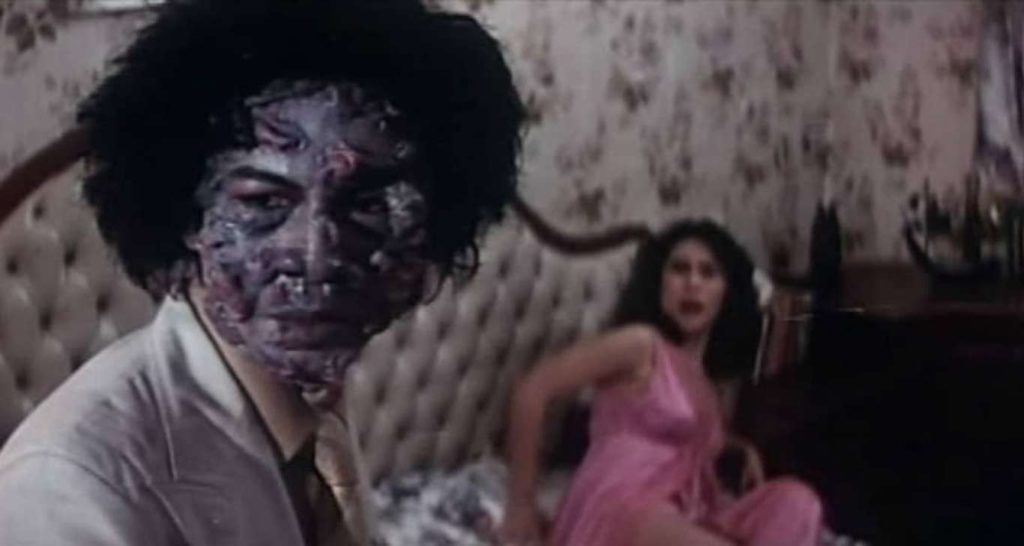


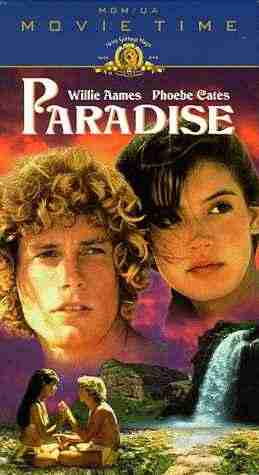 This takes almost all the best elements from The Blue Lagoon and Walkabout…and chucks them out of the window. Fortunately, the one that remains is Cates, following the footsteps of Brooke and Jenny into the “guilty pleasure” hall of fame. She teams up with Willie Aames, the straitlaced son of a preacher, as they wander across a desert conveniently supplied with a surprising number of oases, pursued by a feelthy Arab called The Jackal in lacklustre fashion (he seems to forget about them for months on end) who carries a British flag around with him for no readily apparent reason. It’s supposedly set in the 1820’s, but possesses absolutely no period atmosphere at all: going by the frequency with which Cates de-kits, it’s more like the late 1960’s.
This takes almost all the best elements from The Blue Lagoon and Walkabout…and chucks them out of the window. Fortunately, the one that remains is Cates, following the footsteps of Brooke and Jenny into the “guilty pleasure” hall of fame. She teams up with Willie Aames, the straitlaced son of a preacher, as they wander across a desert conveniently supplied with a surprising number of oases, pursued by a feelthy Arab called The Jackal in lacklustre fashion (he seems to forget about them for months on end) who carries a British flag around with him for no readily apparent reason. It’s supposedly set in the 1820’s, but possesses absolutely no period atmosphere at all: going by the frequency with which Cates de-kits, it’s more like the late 1960’s.
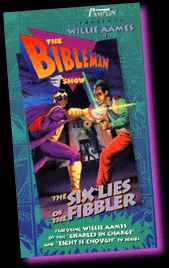

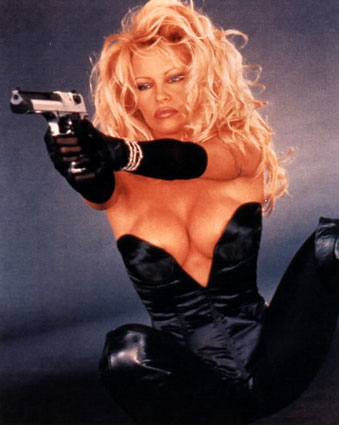 Those words were written in the very first edition of TC, the legendary (and now hopefully forgotten!) issue 0. But it still largely holds true today, since my fascination for, and interest in, movies which fail for one reason or another remains almost intact. Looking back over the years, it’s apparent that these fall into three categories:
Those words were written in the very first edition of TC, the legendary (and now hopefully forgotten!) issue 0. But it still largely holds true today, since my fascination for, and interest in, movies which fail for one reason or another remains almost intact. Looking back over the years, it’s apparent that these fall into three categories: